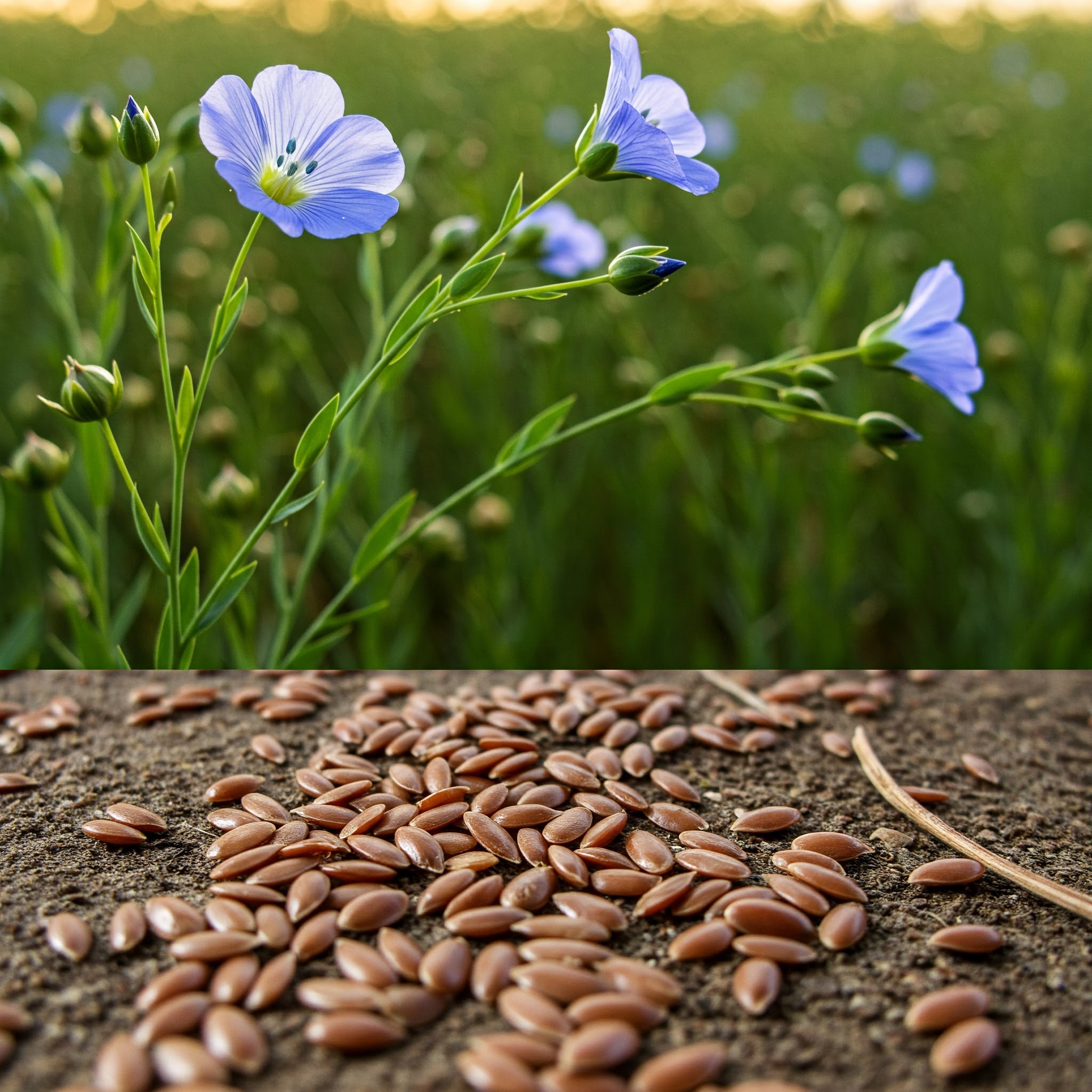Flaxseed (Linum usitatissimum L.) is an important herbal product used throughout history for both food and medicinal purposes. Thanks to its nutritional content and various pharmacological properties, it is also considered as a functional food today.

Flax Seed and Plant (Created with artificial intelligence.)
Botanical Characteristics
Flax is an annual plant, 60-120 cm tall, with blue flowers. The seeds are small, flat and bright brown in color. It is cultivated especially in Central Anatolia and Southeastern Anatolia regions in Turkey. Flax is cultivated for both fiber and seed production.
The nutritional content of flaxseed is particularly notable for its omega-3 fatty acids (alpha-linolenic acid), lignans, dietary fiber and high quality protein. There are also antioxidants such as phenolic compounds and flavonoids. Research claims that these components have positive effects on health.
Pharmacological Effects
- Antioxidant and Anti-inflammatory Properties: It is stated that flaxseed is a plant rich in phenolic compounds and flavonoids. These components are present in the natural structure of the plant and are associated with herbal defense mechanisms against various environmental influences. These ingredients give the plant unique chemical properties.
- Cardiovascular System Related Components: Alpha-linolenic acid (ALA), one of the omega-3 fatty acids, is a component of flaxseed. Flaxseed also contains soluble and insoluble fibers. These ingredients diversify the nutritional composition of the plant and allow for different uses.
- Digestion-Related Fiber Content: Flaxseed contains high levels of fiber. These fibers have the capacity to hold liquid due to their natural structure. This feature provides textural properties in the use of the seed.
- Phytoestrogen Content: Flaxseed contains components called lignans. Lignans belong to the class of phytoestrogens found naturally in some plants.
Traditional and Modern Use
Flaxseed has historically been utilized in various fields in different geographies. Traditionally, it has been used in different ways in both nutrition and daily life. Today, it finds a place in various sectors, especially in food products. Flaxseed has been used in traditional medicine to treat skin diseases, respiratory infections and digestive problems. In modern medicine, many of these traditional uses have been supported by scientific research.
Agriculture and Economic Dimension
The flax plant is a versatile agricultural product grown for both fiber and seed production. Its fibers are used in the textile industry and its seeds are used in industrial areas such as food and health. Linseed oil is used in food products and some technical applications. In these aspects, flax is a plant resource of strategic importance both agriculturally and economically.

